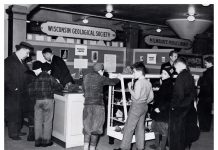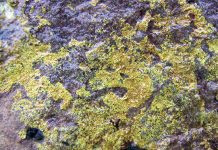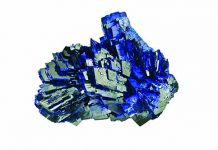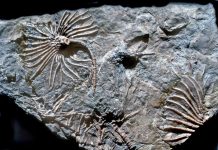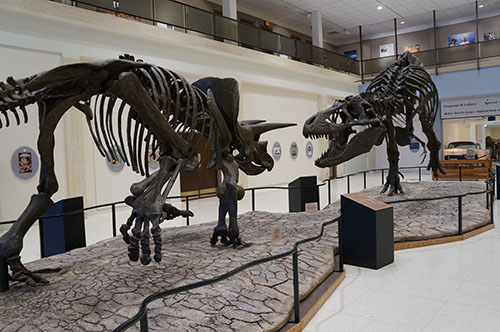
Editor’s Note: This is one part of a three-part article.
Photos and story by Helen Serras-Herman
Lubbock is a city in West Texas with about a quarter-million residents. It is home to the Museum of Texas Tech University and the Lubbock Lake National Historic Landmark, two major museums with exhibits on the dinosaurs and mammoths that roamed the plains of prehistoric Texas. Visitors can see fossil remains or replicas, and learn all about these great Ice Age animals, as well as the Southern Plains cultures that have flourished in the area for the past 12,000 years. An unexpected display at the Museum of Texas Tech was of beautiful pre-Columbian gold jewelry from Colombia and Panama.
Visitors to the area can absorb history that spans the period from the Age of Dinosaurs to recent ranching history, all within a small geographic radius.
In April 2017, my husband, Andrew, and I headed to Lubbock to participate in the Lubbock Art Festival and the Lubbock Gem and Mineral Show, and to give a talk at the Lubbock Gem & Mineral Society monthly club meeting. During our free time, in Lubbock, we visited these museums, and a few other local attractions.
Museum of Texas Tech
Texas Tech is the sixth-largest college, based on enrollment, in the state. It was founded in 1923, and is a very active research university. The Museum of Texas Tech was established as the West Texas Museum in 1929, and in 1969 it took its present name. Its purpose is for scientific research and education.
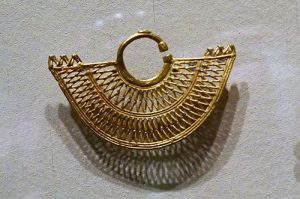
The university offers a graduate-level program in Museum Science and Heritage Management.
The Museum of Texas Tech encompasses the main museum, the Moody Planetarium, the Natural Sciences Laboratory, the Lubbock National Historic Lake Landmark, and the Val Verde County research site. The National Ranching Heritage Center has also been part of the museum since 1970.
Besides the Visitor Guide provided at the museum entrance, very informative pamphlet guides and flyers were on hand in every exhibit gallery. The Museum of Texas Tech is a world-class facility, with more than 7 million objects in its collections.
Just inside the entrance to the Museum of Texas Tech, skeletal replicas of full-size Tyrannosaurus rex and Triceratops horridus welcome visitors.
Exploring the Age of the Dinosaurs
In the long-term exhibitions wing, which contains exhibits on natural history, heritage and climate, we were drawn to the “Changing Worlds” dinosaur gallery, where exhibits explain the dinosaur family tree and the classification of each type. Dinosaurs lived between 228 mya and 65 mya, during the Mesozoic Era, also known as the Age of Dinosaurs. It is divided into three periods: the Triassic (245 mya to 208 mya), the Jurassic (208 mya to 146 mya) and the Cretaceous (146 mya to 65 mya).
In the same wing, in the “Ice Age on the Southern Plains” exhibit, there is a
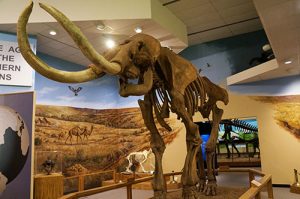
wonderful, realistic mural painted by artist John R. Thomasson, a 1971 Texas Tech graduate, that includes 28 different species that have lived in the Southern Plains of Texas: snow geese, camels, snakes, the Columbian mammoth, muskrats and turtles, just to name a few.
The Western camel (Camelops hesternus) is an extinct native North American grasslands camel that had a single, large hump. Its ancestors migrated to this continent through the Beringian land bridge about 4 mya, during the middle Pliocene period.
A skeletal replica of a Columbian mammoth (Mammuthus columbi) is prominently displayed in the center of the Ice Age room. The Columbian mammoth is an extinct elephant native to the southern North America grasslands. Its ancestors migrated to this continent from Russia via the Beringian land bridge. It closely resembled its cousin the African elephant (Loxodonta africana). This replica was cast from fossil bones of the Columbian mammoth.
Art and Mammoth Fossils
These mammoths inhabited the Lubbock area, and their remains are found at the Lubbock Lake Landmark. The Columbian mammoths were larger than modern elephants, weighing between 8 and 9 tons, and stood 10 to 13 feet tall at the shoulder. Many of us are familiar with the woolly mammoth, which roamed the Siberian tundra and are the source of fossilized ivory tusks. (A great place to learn more about the Columbian mammoth and see actual fossil remains is at the Waco Mammoth National Monument, in Central Texas.)

We also enjoyed the Diekemper Gallery of Pre-Columbian Art, which had some amazing artwork from Colombia and Panama. Several display cases held handmade pottery with designs incised into the clay, some zoomorphic (animal-shaped) objects, and human-shaped “rattle figures” that contain a small pebble or clay ball inside, all dating from between 300 and 1400.
But a wonderful surprise at the Diekemper Gallery exhibit was the gold and beaded jewelry from the Tairona and Sinú people of Colombia. There were some amazingly crafted gold necklaces and earrings with figurative design elements. Only a few pieces have survived intact, as most of the gold objects from Costa Rica, Panama and Colombia were sent to the Old World after being melted into ingots for easier shipping. Also on display were necklaces with beads made from gemstones such as carnelian, rock crystal quartz, jasper and jadeite. These were made by the Tairona people, who were masters of bead production. Much of the pre-Columbian jewelry was made not in pure gold, but in an alloy of gold and copper the Spanish Conquistadors called “tumbaga”. The gold-to-copper ratio of this alloy was not exact.
Tumbaga was easily worked, had a low melting point, and was more durable than pure gold. The gold surface was treated with an acid, like citric acid, and then heated, a process called “depletion gilding” or “surface enrichment”. This treatment removed the copper from the surface and left a rough layer of nearly pure gold that could be polished to a shiny finish.
If You Go
We finished our museum stroll through the temporary “Puttin’ On the Ritz” exhibit of evening attire. These gorgeous evening gowns and suits, which date from between 1840 and 1979, were worn by women and men in Texas for special occasions.
The Museum of Texas Tech University is located at 3301 4th Street in Lubbock. Admission to the museum is free, and it is open every day except Monday. Next door, the Moody Planetarium offers daily shows to the public for a nominal fee.


